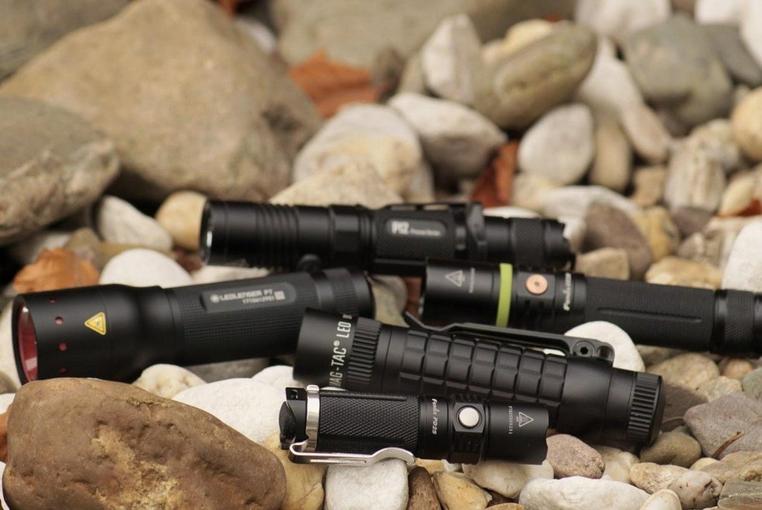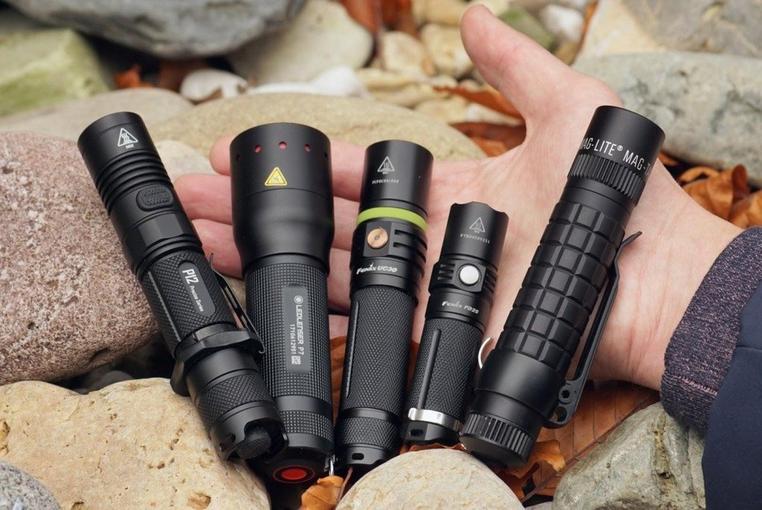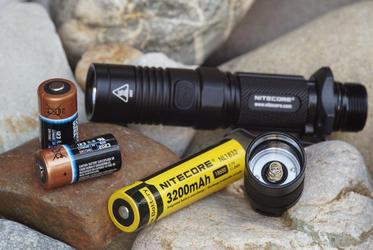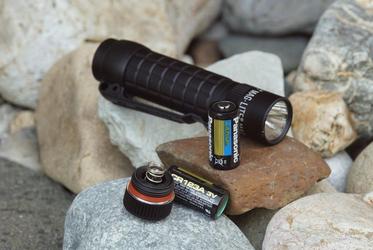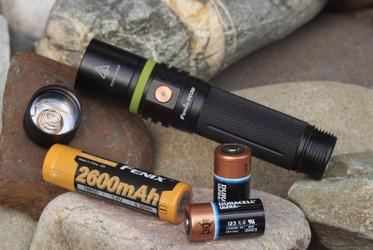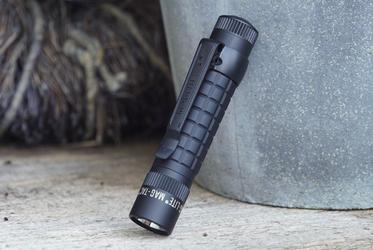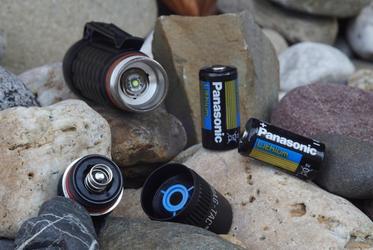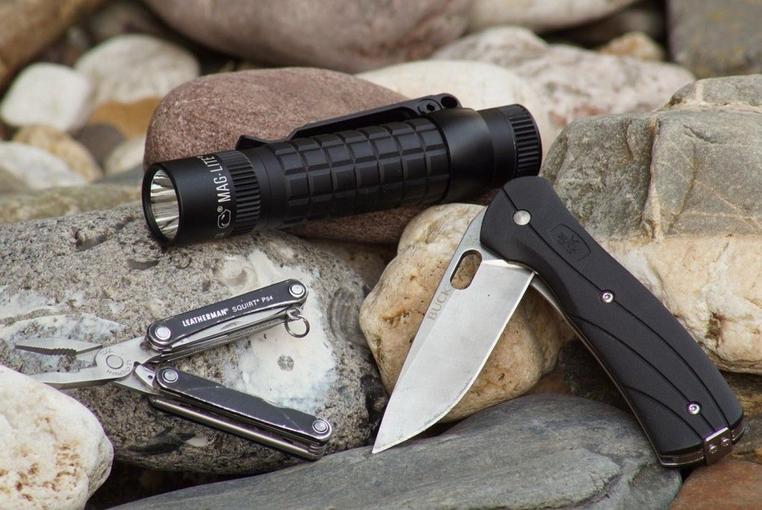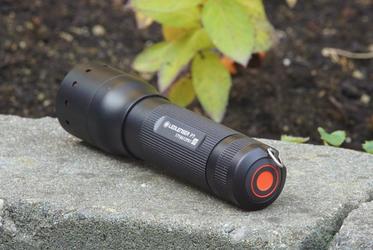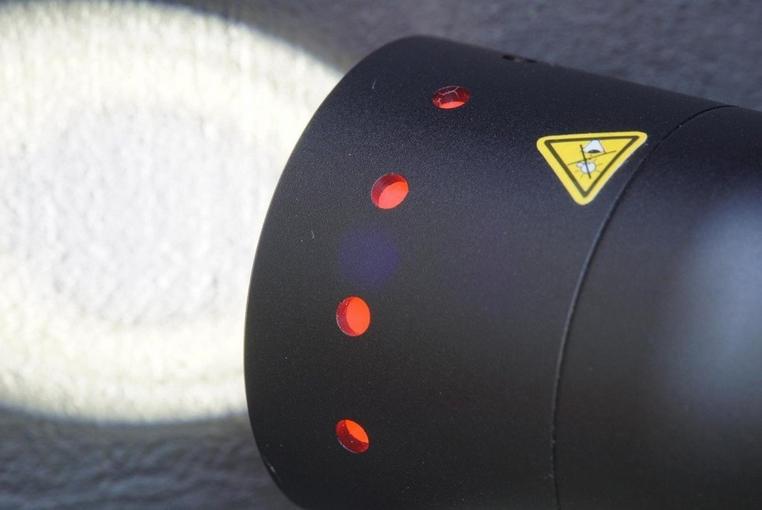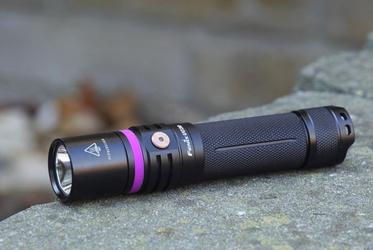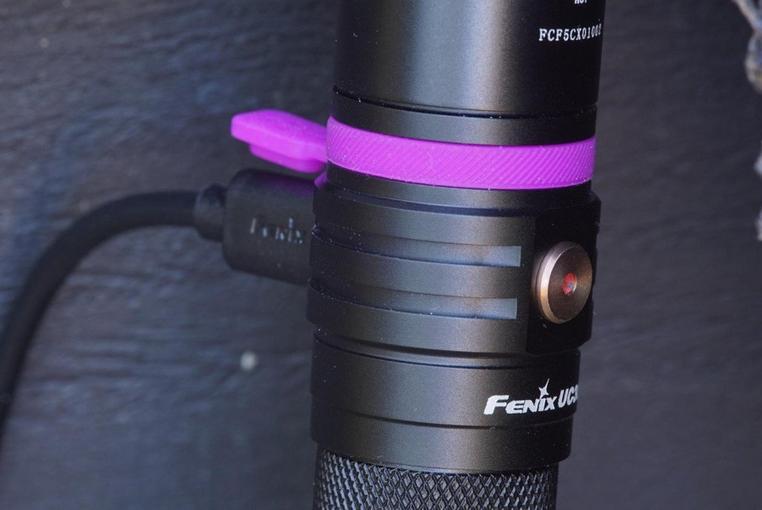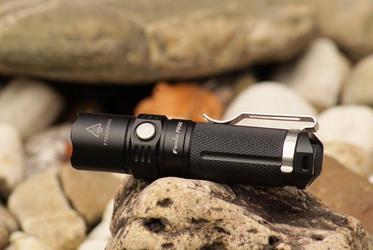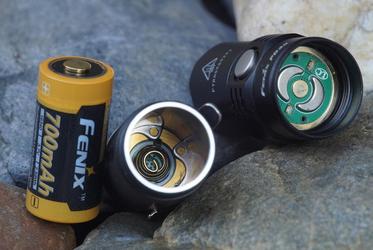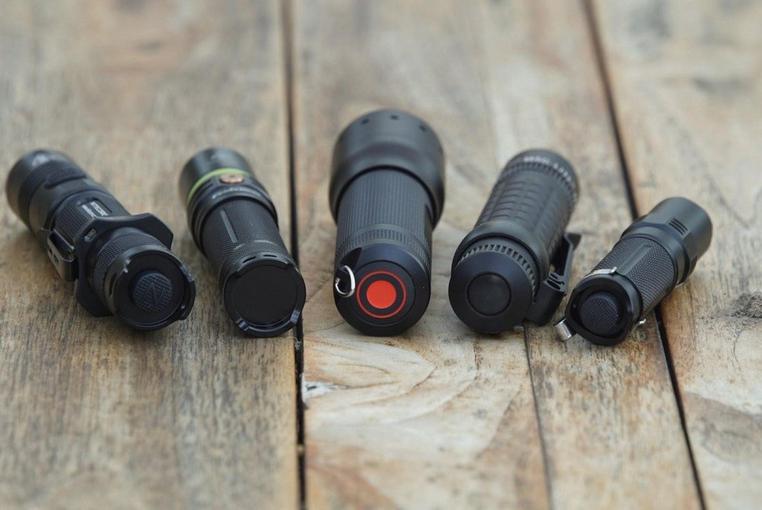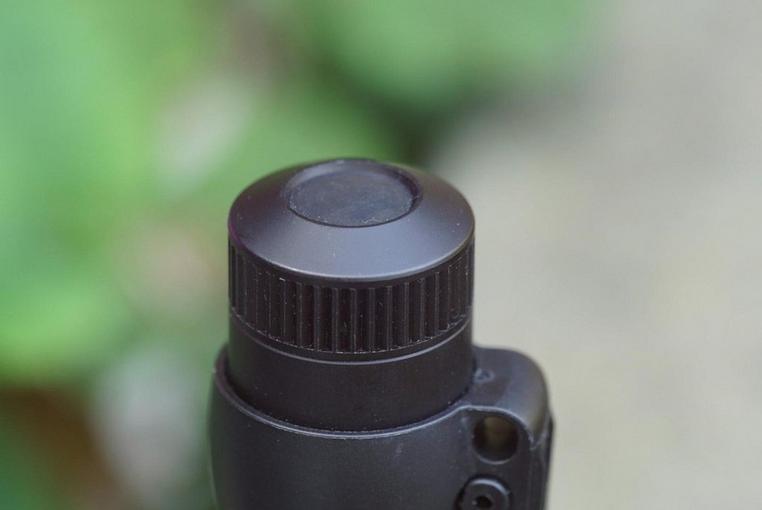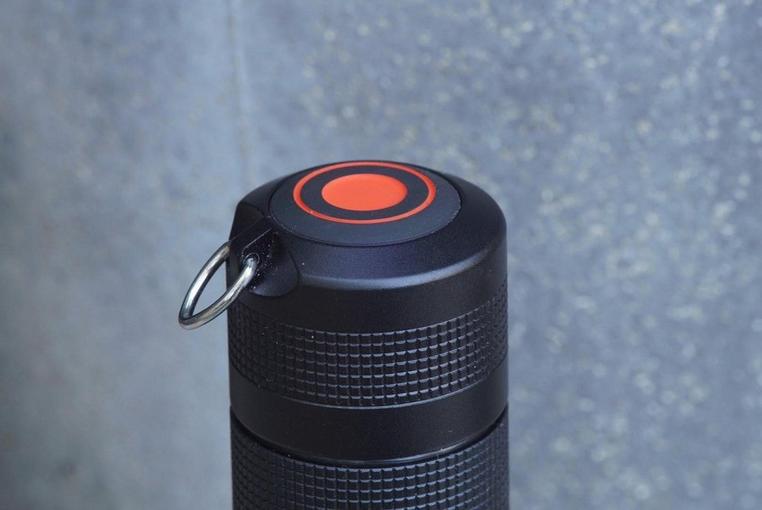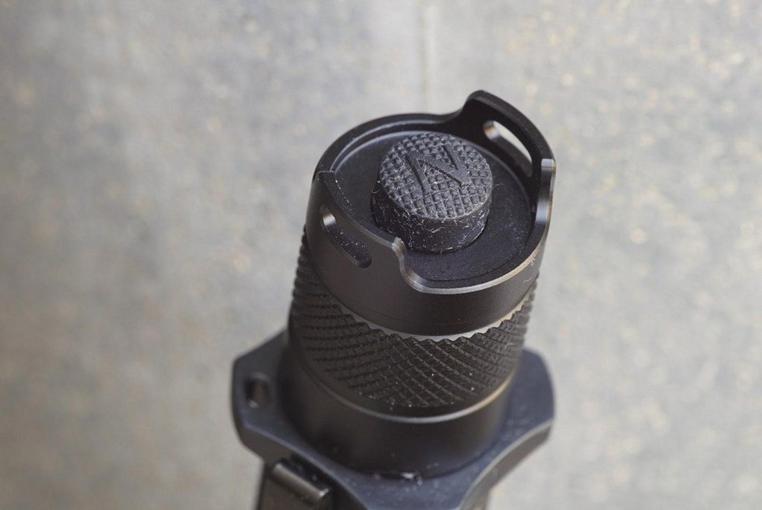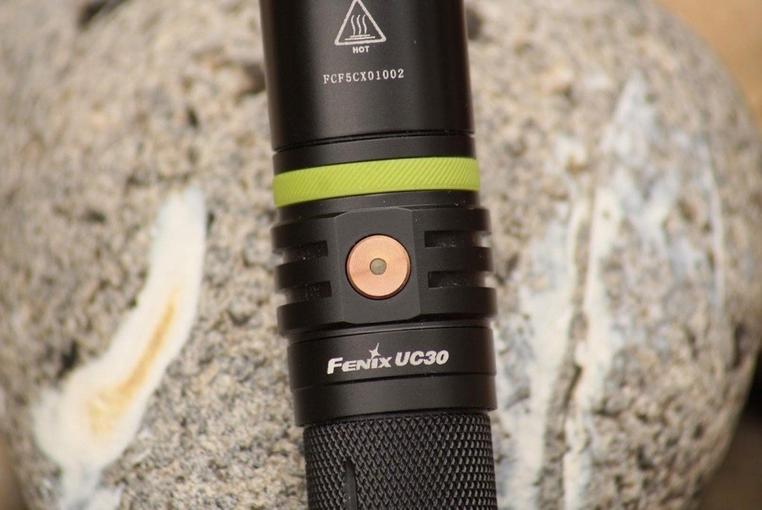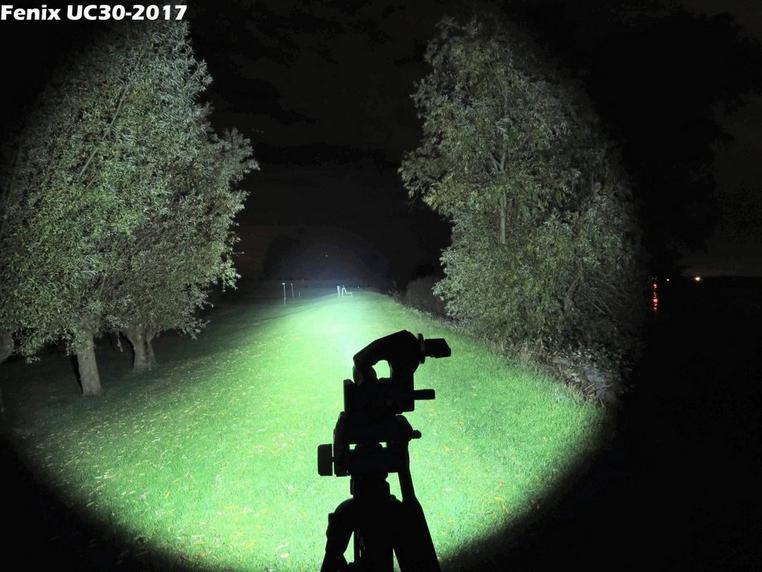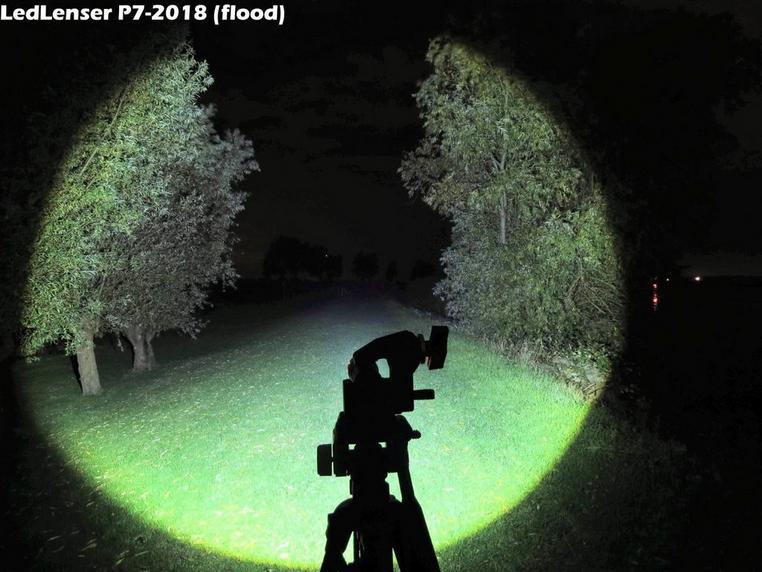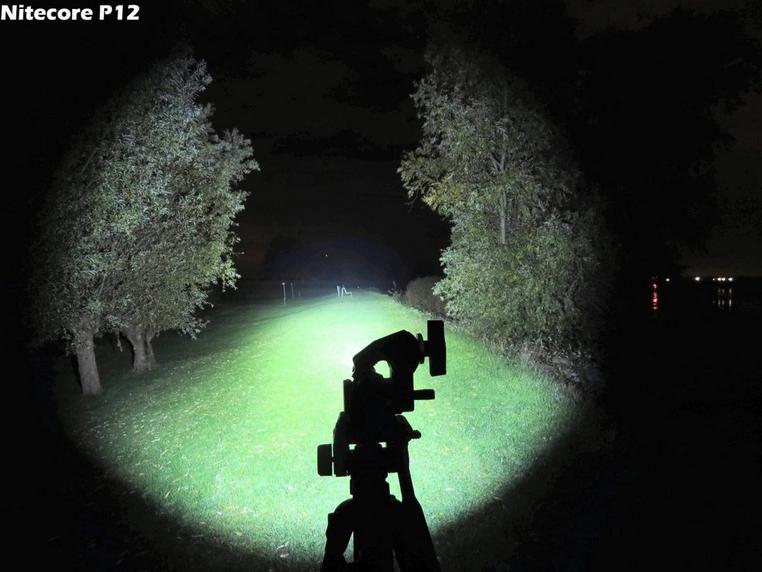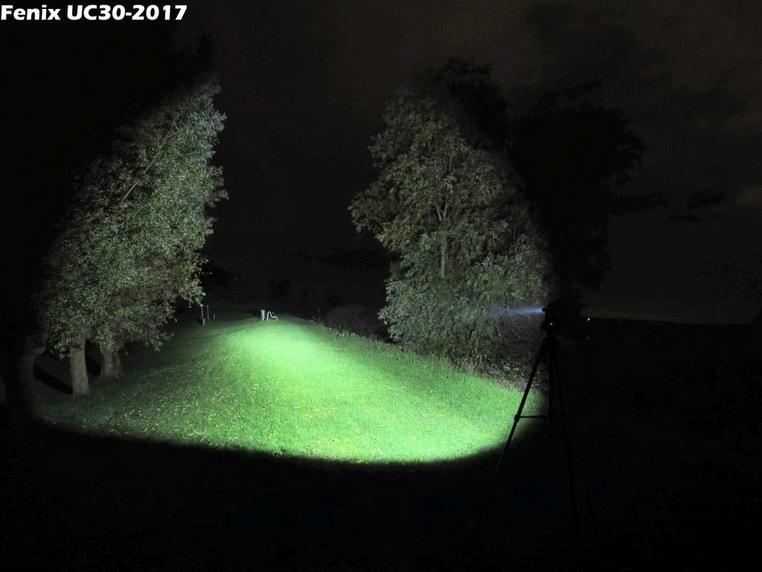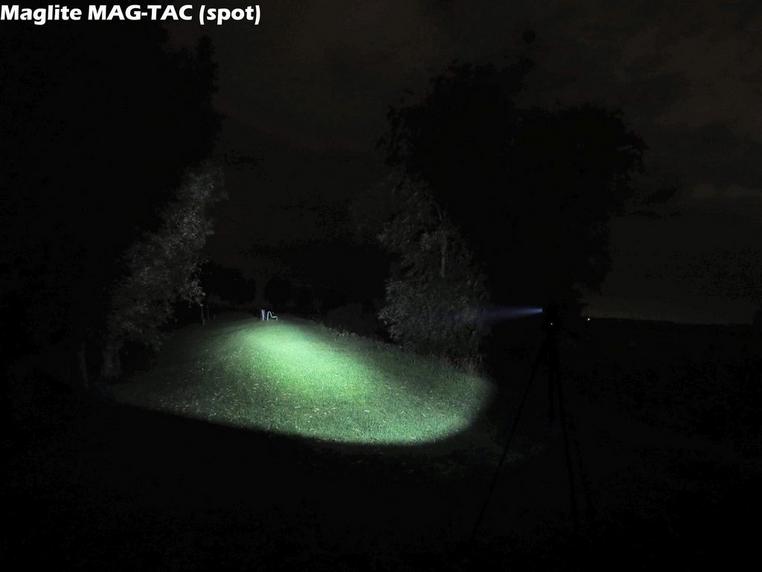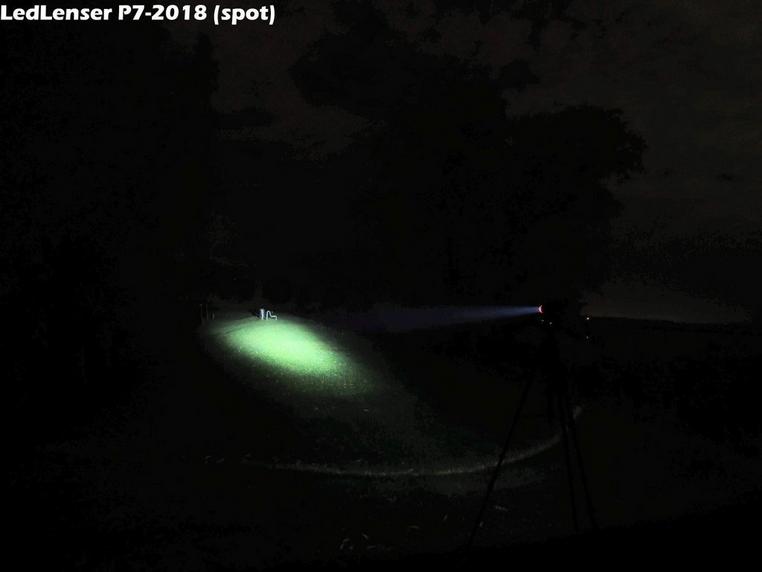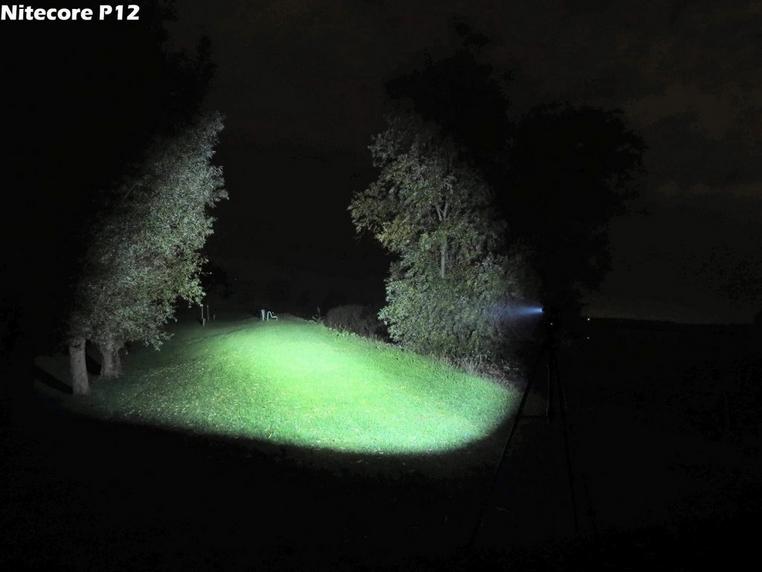Review: 5 lights for in and around the house
I am sure that each household, no matter where, has a flashlight lying around somewhere. In case of power failure, during that tricky task in the attic, in the shed or car a flashlight will be indispensable! As somewhat of a flashlight nut I often find myself on the lookout for lights. The ones I run into, however, are often simple or outdated, not worth that much. And then there is the question if the batteries are still full…
Of course these lights will provide you with light, but they are far from decent. A better and more reliable option can be found at Knivesandtools: lights that might cost a little more, but will never abandon you when you need them most. The range of these ‘all-rounders’ is large; each light also has its own specific characteristics making the choice even harder. In this comparison I will discuss five different lights that have one thing in common: they produce a lot of light! We will look at the lights, compare them and, of course, use them. As such I will help you select the light that will suit you best!
The candidates
Introductions first! In terms of price the five are not that different. The cheapest and most expensive differ approximately 20 pounds. I tested the Nitecore P12, the Fenix PD25, the Fenix UC30-2017, the LedLenser P7 and the Maglite MAG-TAC. Is the most expensive light also the best?
Unboxing
When we look at the packaging we see that each manufacturer had different thoughts about how to wrap their lights. Both Fenix lights and the Nitecore come in cardboard boxes containing a plastic holder that neatly holds the light and included accessories. The Maglite is stored in sealed packaging you need to cut open to get the light out. The LedLenser has been wrapped in a stunning box with a luxurious look and feel. Personally I feel this is the best looking and most practical box; the seal around the Maglite is incredibly unpractical. In terms of contents the Nitecore is best and the LedLenser the ‘worst’. The only accessory included with the MAG-TAC is a torx screwdriver to remove the clip. A carrying cord or wrist strap and a holster as are included with the other four should have been included for this price. Below an image showing the mostly colourful boxes with their contents!
Size
Most lights we are discussing here, except for the Fenix PD25, are all ‘compact middle-class’ lights. Easy to take with you in your jacket pocket without it getting to impractical or heavy; inside or attached to your jean pocket is also an option. The MAG-TAC stands out because it is a little taller, the LedLenser has a thicker body because it carries three AAA batteries. The Fenix PD25 is different: it is a lot smaller than the rest and therefore easy to discretely carry in your jacket. If you have large hands this light could be a little too small. I personally feel that the UC30-2017 has the best size as a so-called ‘Everyday-carry light’, followed by the Nitecore. The LedLenser is rather thick and the MAG-TAC slightly chunky. The PD25 is so compact you sometimes almost lose it inside your pocket.
Power supply
We have reached a key feature! There are many different types of batteries ranging in size from large to small, where new techniques make it possible to retrieve more and more power from compact batteries. The LedLenser works with three AAA batteries. Easy to purchase, and not expensive. Unfortunately the P7 doesn’t work with rechargeable batteries. As a result you will have to purchase new batteries when the old ones run out. The MAG-TAC also cannot handle rechargeable batteries; this light uses two CR123A batteries. Individually these are a lot more expensive than 1.5 volt batteries, but they do have their advantages: they can handle very low temperatures and can be kept for a very long time without losing their strength. The PD25 also works with one single CR123A battery. Better for the environment and thanks to the higher voltage the light will supply you with more light in the highest mode. Both the Nitecore P12 and the Fenix UC30 work with two CR123A batteries and a single 18650 battery. I personally recommend using the rechargeable 18650 battery. Do, however, pay attention to the right polarity. The Fenix and the Nitecore lights both use so-called ‘button-tops’. I prefer lights with rechargeable batteries, especially when you frequently use the light. However, I also like to keep a set of CR123A batteries close: indispensable on that cold snowy winter’s day or as a back-up.
Light source
For the light sources the following applies: all LED lights are different which is evident when you look at the five lights tested here. All have been enhanced with a different LED light. We will discuss all light sources but first the following: to achieve its full potential a LED light needs the right reflector. A small LED light with a long and deep reflector will create a smaller beam than a shallow reflector with a larger light source. I will discuss this further during the field test with concrete examples. Back to the LED lights. The Maglite MAG-TAC is the only light with an unknown type of light source: the manufacturer doesn’t say anything about it. We see a small LED light which, combined with the deep reflector, shines pretty far. LedLenser also doesn’t specifically list the type of LED light used: the P7 has the largest LED light of the five lights tested which listens to the name High End Power LED. Because LedLenser uses a convex lens which functions as a type of magnifying glass the P7 also has a great beam distance. Thanks to the stepless focus system you can also make the beam even and wide; for years this has been a popular function for many users. The Nitecore P12 has a XM-L2 U2 LED light: this source gives the user a slightly wider beam then the MAG-TAC and won’t reach as far. The Fenix PD25 has been enhanced with a XP-L (V5) LED light: a powerful LED light which, combined with the slightly shallow reflector produces a rather wide beam. The UC30-2017 has been given a completely different, newer generation LED light: an XP-L HI LED light. This LED light lacks the ‘convex’ lens cover and therefore has an intense, but also fairly wide beam. As such the light has a great beam distance and it lights up a rather wide surface. As you can see all candidates are enhanced with a LED light which makes the light shine rather far; only the LedLenser has the option of a completely uniform beam without hotspot that is suited for short distances. More about light profiles later!
Impressions
Five flashlights that are, in terms of size, not that different, but all have their own ‘look and feel’. The Maglite, for instance, looks ‘tough and indestructible’; the LedLenser has bright red accents and the Fenix and Nitecore lights opted for the no-nonsense design.
Maglite MAG-TAC
The coarse structure on the body of the Maglite nicely fits the design. In addition, the ridged structure on the head of the light and the end cap stand out. The MAG-TAC has the longest and strongest (belt)clip of all five. The light feels solid but has, in my opinion, one less strong aspect: the head of the light. The head can (as the only one of the tested lights) easily be disassembled after which the LED light will be exposed. This means that the MAG-TAC is only splash proof. The lens is also made from plastic, which is unusual for the competitors.
LedLenser P7
The LedLenser P7 has a timeless design that has proven its worth for years. It is, however, a little ‘chubby’, which is also the result of the casing which houses three batteries next to each other. The design is very nice and sleek, the red switch and the illuminated red dots in the head work well. Behind the lens (which is also made from plastic) we see, in zoomed out position, the brand and patent engraved in the reflector. A stunning style element. In addition, it has a nice finish and looks carefully thought out. I don’t really like the sticker on the head which warns you not to look into the bright light: the manufacturer should simply engrave it in the head of the light.
Fenix UC30
Despite the fact that the UC30-2017 looks very simple and austere, Fenix has given this light a special feature. Around the head of the light you can find a rubber ring which also protects the USB-port from dust and water. You receive three of them: in purple, green and black. As such you can personalize the UC30-2017, but will also immediately have a couple of spares. The bronze coloured metal side switch perfectly matches the whole. The light feels decent and is perfectly finished. The edges of the switch feel slightly sharp; other than that I have little else ‘negative’ to say about this light.
Fenix PD25
The same applies to its smaller brother, the Fenix PD25. This light is clearly the smallest of all five and only just exceeds half the length of the other flashlights. Thanks to the smaller battery the design of the PD25 is more balanced, the proportions are better. It has a decent design, which, in terms of look and feel, benefits from the silver-coloured clip and the side switch.
Nitecore P12
The design of the Nitecore P12 looks a little over the top, you can immediately tell that this is an older design. The P12 is the longest of all five and the only one enhanced with a tactical ring, which you can also easily remove. The inside of the light has been enhanced with a lot of engraved information; information about how you need to remove a tool such as this is great, but I don’t think it needs to be engraved inside the light. The illuminated side switch is a striking feature on the P12. The Nitecore P12, like some of the other lights, feels solid. In fact, there are no lights that actually disappoint during the introductory round: they have a nice finish and can definitely handle their own. You might pay a little more for these lights, but you do receive a solid product which far exceeds the lights that only cost a little.
Possibilities
Of course a flashlight is, first and foremost, there to light up your path whenever you might need it to, but for most users this won’t be enough. Being able to choose from different light outputs, could, for instance, be a must. After all, indoor you won’t need as much lumens as you might need when you go out to walk your dog in a dark park. In that case the Nitecore and Fenix lights score best: the Fenix UC30-2017 has five balanced light modes. That’s how I like it! You can easily change the light to suit the circumstances. In addition, a lower mode can definitely prolong the life of the battery! The smaller Fenix PD23 and the Nitecore P12 are both enhanced with four light modes; also more than enough. After that comes the LedLenser P7 with three modes and the Maglite MAG-TAC with two. In any case the P7 and MAG-TAC are not overly equipped in this respect: a stroboscope mode is also missing, while this mode is indeed included in both Fenix lights and the Nitecore P12. This ‘self-defence’ mode gives you a sort of certainty in a dark alley or forest. The presence or absence of this feature will definitely be a deal breaker for some users. The Nitecore is the only light enhanced with a so-called ‘moonlight-mode’: a very energy-efficient mode that enables you to see enough indoors without disturbing others. In addition, the P12 has two flashing modes: an SOS mode in case of an emergency and a flashing function (with optional cone) to mark something. In addition, the Nitecore gives you the current battery voltage via the blue illuminated side switch. Incredibly practical! The same feature can be found on the UC30-2017 in the switch which lights up in red and green. The PD25 does not have an indicator, but warns you when the battery is low as it starts to flash. The LedLenser and the Maglite miss this function; as a result you could unexpectedly find yourself with an empty battery. All lights, except for the UC30-2017 have a ‘momentary-on’ function which means that you can turn on the light via the switch on the back of the light as long as you hold the button. Practical as it enables you to silently turn the light on and off without disturbing your surroundings. The Nitecore P12 and the Fenix UC30-2017 clearly have the most options, the Maglite MAG-TAC the least.
User experience
Even though all lights (except for the Fenix PD25) are fairly similar in terms of length it doesn’t mean that they all feel as great in hand. After all, the thickness of the body and structure determines if a light feels great in hand and can easily be controlled. And what about the position of the switch? All the lights need to be held in a so-called tactical way, which means with four fingers wrapped around the light while you hold your thumb on the back switch. The LedLenser and the Maglite can only be controlled by using the back switch. The UC30-2017 is slightly different as you control it via the side switch, which is also why you hold it differently, your thumb placed underneath the head of the light. The small Fenix and the Nitecore both have two switches; you can turn the light on with the back switch and select the right mode with the side switch. I still feel that this is the best way for me to control a light as it works best.
The controls are different for all lights; some models definitely take some getting used to. The MAG-TAC, for instance, has the most unconventional controls, even though they are not illogical. When you press down the back switch once the light will turn on in the maximum mode as long as you hold down the switch. If you want to keep the light on you need to shortly press down two or three times. When pressing down twice the MAG-TAC will turn on in the highest mode, when you press down three times you end up with a lower mode. And that’s it. The MAG-TAC doesn’t have any other options. Good because it will never get too complicated. However, I miss an economical mode and a flashing or stroboscope function on this light. In addition, the light will always select the highest mode when turning on and doesn’t have a memory function for the mode last used. The controls via the somewhat stiff, rubber switch work very well. The light feels great in hand, also thanks to the coarse structure of the body. You can easily locate the switch, but it is slightly concealed; when you are wearing gloves it might be a little more difficult to find in the dark.
The controls of the LedLenser are similar to those of the MAG-TAC as this light will immediately switch to the highest mode when turned on. The difference, however, is that if you don’t secure the switch you can continuously switch between the three light modes by shortly releasing and pressing down the switch. The order is: high – medium – low and so on. The P7 also hasn’t any additional features next to the three light modes, so no low economical mode. The most important feature can be found in the head of the light: the beam can be adjusted by extending or retracting the head of the light. When extended the beam will be focused and therefore meant to shine further; when retracted the beam will be wide and even, so perfect for short distances. The P7 is slightly thick and therefore doesn’t feel as good in hand as the rest. The body is also very smooth. As a result the chances of it slipping through your fingers is a little bigger. This switch is also slightly concealed but a lot bigger than the one on the MAG-TAC. As such the rubber button will always be easy to find.
You can turn the Nitecore on by pressing the switch on the back; slightly press it down for momentary, click for continuous light. When you turn the light on it will always give you the mode last used which I personally find very convenient. As a result you can always switch it on indoors at the lowest mode without disturbing your housemates. After turning it on you can walk through the four light modes or the three flashing modes. The flashing modes are not that hard to find: press the side switch down for two seconds and the light will turn on the blinding stroboscope mode. The P12 also remembers this mode; you can quickly use this defensive mode in case of an emergency. As befits Nitecore this allrounder has also been enhanced with a number of great gadgets. The most important one being able to see the battery voltage to an accuracy of 0.1 volts. Incredibly practical as it enables you to charge your light in time. The P12 is relatively long but still feels great in hand; the tactical ring gives you additional grip. The switch on the back and the switch on the side are easy to find.
The Fenix UC30-2017 is different in terms of controls when compared to the other lights. The switch is located on the side which means you need to hold the light differently. The sustainable (steel) switch needs to be pressed down about a second to turn the light on or off; the Fenix also remembers the mode last used. After turning the light on you need to press down shortly to walk through the five modes. The UC30-2017 has also been enhanced with a stroboscope mode which you can turn on from any mode by pressing down the button about two seconds. Great because it means you never have to think about it! This light also has an indication of the remaining battery voltage, which is built into the switch. The light feels great in hand and the size is good. The switch, however, is slightly small but can still easily be found in the dark when you are not wearing gloves. Charging is also very simple, the indicator in the switch will turn red when charging and green when the battery is full. It cannot go wrong. You can select the lock-out mode by pressing the button three times in a row. As a final check the light will blink twice when it is locked. Press it down twice in a row and you can start using the light again!
The Fenix PD25 has been enhanced with ‘double’ controls: you can turn the light on using the back switch and select the modes via the side switch. Works very well on this light. As such you also make sure it won’t accidentally turn on in your pocket: the risk is a lot smaller for a light that needs to be switched on via the back. The PD25 also has a steel switch. As such this light, and its brother, are the only ones with an indestructible switch. It doesn’t have an actual battery voltage, but it does tell you when the battery is running low: the light will regularly give you a flashing signal. The on and off switch is easy to find in the dark, the side switch, however, is not that easy to find (especially when wearing gloves). Tip for the manufacturer: a small indicator in the side switch and you will always know where to find it!
Colour and image of the light
The image of the flashlight is mostly determined by the combination of the light source used (there are hundreds of different LED lights) and the reflector. All lights have their own light profile because they don’t have the same combination of LED light and reflector. A small LED light, such as the one in the Maglite MAG-TAC, leaves you with a narrower beam than a larger light source as, for instance, included in the Nitecore P12. A narrow beam is not as blinding to yourself and will reach further to make sure you can expose targeted objects from a greater distance. The Fenix UC30-2017 has another option: a ‘flat’ LED light, so without a convex lens. This leaves you with a more focused and narrower profile because the lens normally scatters the light. As such it is important to also consider these features when choosing the right model. Later on in this review a couple of realistic photographs that show you what it looks like in real life! The colour of the light is also important: warm colours works better when it is foggy out because you won’t have as much reflection. The colours also come into their own better. Cold white light isn’t as blinding and reaches further. Below you can see all five contestants in a row, pointed at a white wall. This comparison clearly shows you the difference in colour.
In the profile of the MAG-TAC you can clearly see that a smaller light source and a deep reflector are being used. The light is mainly concentrated in the middle, the light has a relatively small hotspot and an average corona (the light around the hotspot). The corona, rather abruptly, transitions into a large surface with weak residual light. A typical profile for this combination of LED light and reflector. In reality this light is therefore a little more suited for longer distances because the spot can have a blinding effect at a short distance. You could make the profile a little less concentrated by loosening the head of the light. The profile will become a lot more even but you do however clearly see a decrease in range. Especially when using indoors you can clearly see rings in the profile, which I do not find that appealing optically speaking; many competitors did a better job in that respect. The light has a cold shade that has some blue in it. This is most noticeable when you use the light next to the Fenix or the Nitecore.
LedLenser has been working with the patented focus system for years. The LED light shines through a magnifying glass and you can zoom in and out. When we completely focus the light we can see a large hotspot, there is only a small corona and almost no residual light visible. By zooming out you can go so far and see the hotspot completely magnified as it were; as such you are left with a completely smooth profile that has lost a lot of its intensity and range. In reality you can therefore go with a completely focused and far-reaching beam up to a broad beam for short distances. In addition, you can also opt for a happy medium by zooming half in or out. This option will appeal to many users! The focus system does, however, affect the optics: you will clearly start to see rings in the profile. Especially indoors this is easy to see and, frankly, it doesn’t look good. The colour of the light is very cool, but fortunately not too blue. Here the same applies: it will stand out most when you compare the P7 to a ‘warmer’ light.
The Fenix PD25 is the smallest light in this test and, as such, also has the smallest head. Because it has a relatively large LED light we can clearly see this in the light profile. A large, even hotspot and a similar corona with relatively little spill (the residual light). You will have an even and smooth profile at a short distance, even though the light, thanks to the used LED light in combination with the battery, still has a decent range. A typical example of a so-called ‘all-round profile’. As such it is practical indoors, but also more than sufficient during an evening walk. The profile is nice and even, there are no spots or sharp markings anywhere. They really did a fine job there at Fenix. The colour is clearly less cold than the Maglite and the LedLenser, even though we still cannot call it neutral white. In humid conditions such as mist or fog this colour will be perfect.
It’s big brother, the Fenix UC30-2017, is the only one that uses a flat (XP-L HI V3) LED light. You can clearly see this in the profile: a relatively concentrated, bright hotspot. Around it you can see a medium corona which gradually transitions into the spill. As such the light image covers a large surface, but also has a good range. This is also clear outside: the UC30-2017 is, in terms of reach, the best in the test but also covers the widest area at a shorter distance. It is truly surprising how large of a surface you can light up with such a compact flashlight. It is a light that definitely holds its own outside when using the higher modes. When indoors I recommend only using the lowest modes. This profile is also nice and even: no dark spots or rings. The cold-white shade has the colour it is supposed to have, we can’t find any traces of blue.
The Nitecore P12 has been around a little longer, but the powerful LED light is still a contender. The P12 has the largest hotspot of all five, with a medium-sized corona which gradually transitions into a rather substantial spill. A truly ‘mixed’ profile you can do a lot with. You can easily light up the path ahead at short and medium distances. In terms of light profile this Nitecore is an absolute all-rounder. With this light you also see the advantage of a non-focusing head in the profile. The shape is beautifully even and round; spots or rings cannot be found. Here you also see a good, but cold-white shade and fortunately no blue or green hue.
Beamshots
High time, after having discussed the profiles, to see what the lights actually look like in reality. The test site is a quay alongside a river with some willow trees on both sides. A bench is located about fifty meters away. Here we can clearly see the beam distance of the lights and how large the totally illuminated surface is. All photographs are made with the exact same settings and from the same position. Now you can beautifully see the distinction between the colours based on, amongst others, the grass and the leaves on the trees. To make sure you are not left with an abundance of photographs I only tested and photographed the lights in the highest mode. Look and compare!
Again the lights at the same location only now the camera is placed a little to the left. The images once again clearly show the beam distance in the highest mode.
To give an impression of the beam distances I will now show you some photographs as the lights are held in hand. The highest tree behind the row or trees (of which I am trying to illuminate the top) is located approximately 75 meters away. Because we are talking about distances I only tested the Maglite and LedLenser in spot-mode.
Conclusion
As we saw in this comparison each light has its strengths and weaknesses. It also matters what you will use the light for. If you use the light intensively you actually can’t ignore the versions with rechargeable batteries. The Fenix UC30-2017 is best in that respect, followed by the Nitecore P12. The Fenix PD25 is great because of its size and because it is basically invisible when you carry it with you. This light, however, does have a smaller battery which means it won’t last as long as the versions with a 18650 battery. The LedLenser is surprising in terms of how much light it produces for a light with only three AAA batteries. The profile can easily be adjusted and the non-rechargeable batteries are not expensive, but also not sustainable. The Maglite MAG-TAC will never abandon you, even not when it is freezing out thanks to the CR123A batteries. You do, however, have to purchase new batteries for this light. All tested lights can handle their own, but are not all waterproof. The Fenix lights and the Nitecore can handle being dropped into water, the Maglite and the LedLenser, however, are only splash proof.
Taking al strengths and weaknesses into account I can say that I am personally inclined to choose the Fenix UC30-2017 and the Nitecore P12 because these lights offer you the best combination of user-friendliness, sustainability, light output and being waterproof. Next are the LedLenser with the surprisingly powerful and focusable beam and the small Fenix PD25. The Maglite has the toughest look and feel and has built quite the reputation as being a very strong brand, but the light itself is in terms of possibilities and user-friendliness not as good as the rest.
Finally I would like to take the time to thank Knivesandtools for making these lights available for this comparison. I hope that I have helped you become acquainted with the world of lights and that this test will help you make the right choice!
Koen van der Jagt
Ever since he could walk Koen has been interested in lights, wires and batteries. As a child he was always working with dyno torches, bike lights and electrical boxes. The krypton and halogen lights were replaced by LED lights. A couple of years ago he discovered the ‘professional’ stuff. His first brands were Led Lenser and Fenix. Photography is also one of his hobbies. In addition to nature and meteorology Koen loves to show others what a light can do and what its beam looks like at night. Koen’s reviews can often be found on forums such as candlepowerforums.com and taschenlampen-forum.de. Throughout the years Koen has collected lights in practically any category: from small and compact to enormous powerhouses.

